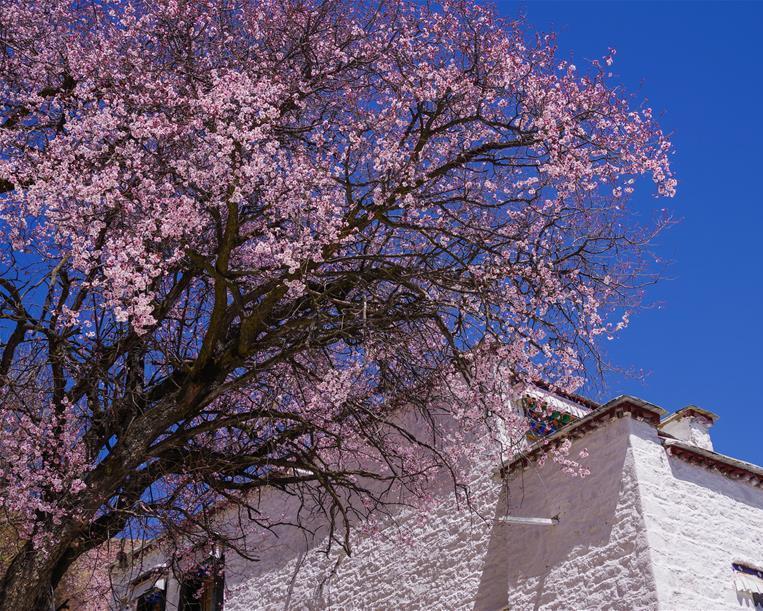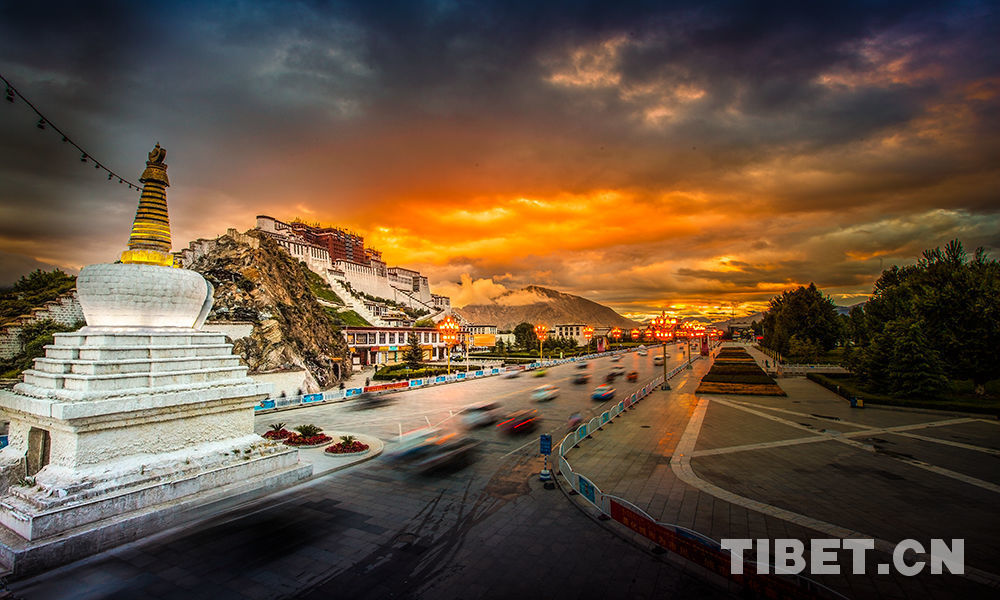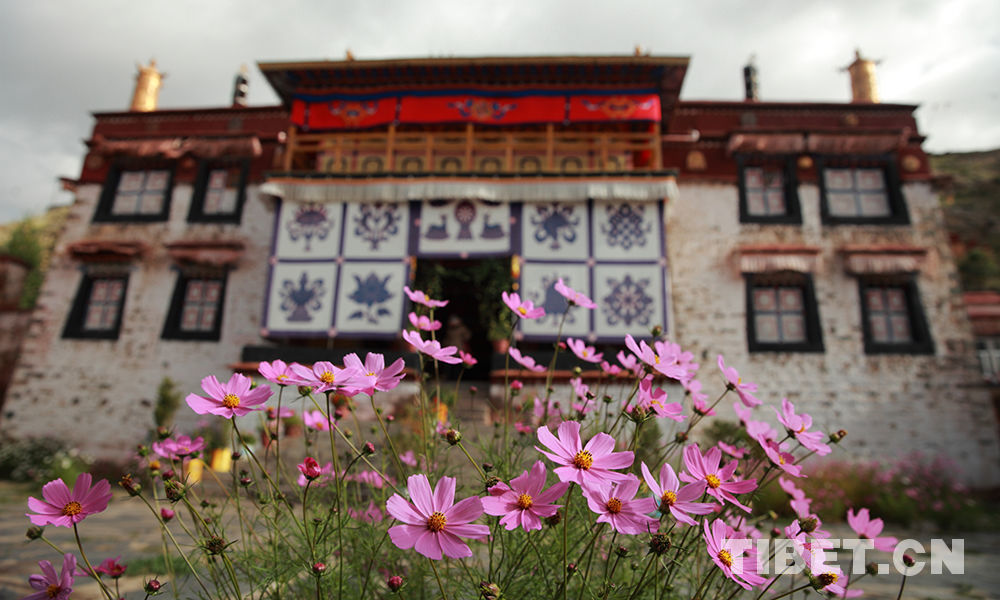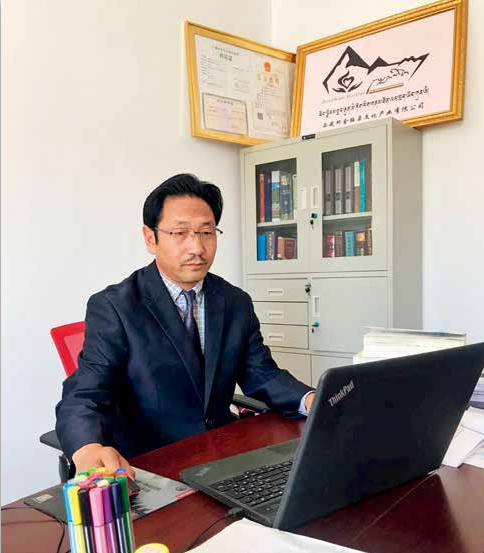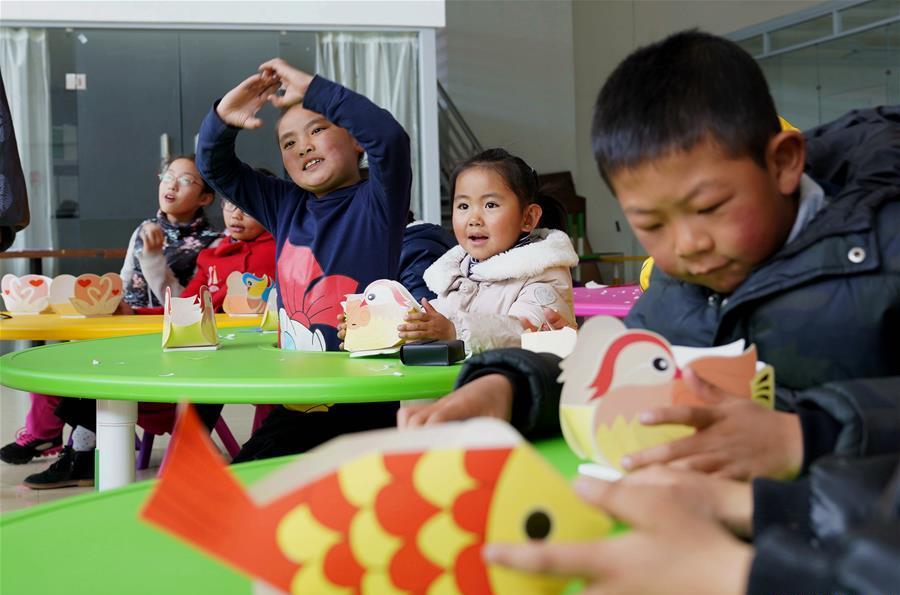Plaque: signal of "Tibet Independence" and Violence
A plaque-unveiling ceremony for "commemorating" the "Tibetan Freedom Fighter" and their American drillmasters from 1958 to 1964 was held at Camp Hale of central Colorado, the US by Central Intelligence Agency (CIA) and US Forest Service on September 10, according to foreign media reports. Officials of US Forest Service, some US councilors together with once-trained Tibetans, former CIA agents, as well as the local organizations of the Dalai clique attended the ceremony.
Trainees of those very years were flattered as "the best and bravest of their generation" by the plaque and the US Congress senators claimed "the plaque is a symbol for the joint efforts of the Tibetan people and the American people. At the same time, the plaque can remind us to remember the Tibetan Freedom Fighters and their drill masters forever."
To commemorate the dirtiest, cheekiest and darkest actions in 1950-1960s for inciting the "Free Tibet" and armed rebellion, it really deserves our further thinking about it. From this point, it is indeed a good plaque as it can help people recall the criminal history when the 14th Dalai Lama secretly collaborated with the CIA to overturn New China's regime; it is really a good plaque because it exposes the violent face of the Dalai clique as well as the true aim of some foreigners and the Dalai Lama for "Free Tibet" by violence at any time.
The truth of the Camp Hale
After the Second World War, the US began to poke its hand at "Tibet issue" directly, intending to curb the liberation of the Chinese people, and did harm to China's unification by taking advantage of the upper reactionary clique. As early as 1954, CIA set out to recruit secret agents among Tibetans and trained them overseas, who were sent back to Tibet to conduct armed rebellion and bloody campaign of violence. Those who were in charge of contacting the US and recruiting secret agents were nobody but Tubdain Norbu, the eldest brother of the Dalai Lama and Gyalo Thondup, the second elder brother of the Dalai Lama. In the spring of 1956, a rebel forces "Chushi Gangdruk" in western Sichuan Province was defeated utterly and whisked into Lhasa, which was taken as a difficult-to-meet opportunity to lend hand on Tibet, split China by America. Alle Dulles, director of CIA at that time said:" We shall provide secret supports to those Tibetan insurgents to harass China."
In the same year, Tubdain Norbu and Gyalo Dondrup went to Calcutta to ask for military assistance from CIA and then made a deal successfully. The United States gave the consent right away to provide trainings for the "Khampa guerrilla fighters" and then send them back after training to support the local rebels.
The training base was set up on Ryukyu Islands and the Saipan Islands at first, and later had to move to the Camp Hale deep among the Rocky Mountains, where was similar with the terrain of Tibet at the 10,000 feet above sea level to avoid the physical discomforts of the Tibetan trainees.
"Denver Post" reported a military base would soon be put in use at Camp Hale in Colorado on July 16, 1957. A plaque written with "Danger! Do not close" was hanging at the entrance of the camp to mislead the climbers thinking as the nuclear waste disposal site.
All the guards at the camp get the order to shot any intruders on sight. It was in that remote secret base, over 170 (some witnesses said around 300) rebels chosen by the CIA and the Dalai clique successively received various skills such as blasting, wiretapping, transmitter-receivers and bush fighting.According to the U.S. financial allocation plan in 1964, the cost for the secret training base was 400,000 USD. However, the travel expenses for trained Tibetans reached 355,000 USD, and the expenses for Guerrilla organization hit 500,000 USD with 225,000 USD for equipment and transportation costs. For those trainees singled out at that time did not know where to go and even did not know what would be waiting for them.
Countless Crimes of "Free Tibet Fighters"
Disclosed records from CIA shows, altogether 49 trained rebels in eight batches were sequentially para dropped down to the core insurgence area around Lhasa, Chamdo and Litang, etc., to collect intelligence, guide the U.S. aerial reconnaissance and organize rebellious militants.
With the guidance of these trained agents, the U.S. Air Force completed over 30 airdropping task with materials weighing up to 250 tons for the hidden Tibetan rebels, including nearly 10,000 M1 muskets, Sten guns, compatible 57mm recoilless guns and anti-aircraft machine guns as well as monetary fund. The rebellious bandits were so avid for the money that they even had fierce fires at each other to scramble for the airdrops.
As admitted by some of the trained bandits, after the special trainings in Colorado, the rebels were directly dropped to eleven areas in the Kham region. With ceaseless support of arms and ammos, they continued to fight the Chinese army until late in 1963.
Wangdu Gyatso who was airdropped with the second batch later became Commander of the "Sishuiliugang religion guards" guerrilla, and was only shot dead by the Nepali army in 1974 near the China-Nepal border.
Backed up with aids from the U.S. and the upper-level reactionary Tibetans, the gang of trained rebels which fled to Tibetan region started their more wanton recruitments and acted more aggressively, with a maximum group of over 4,000 people.
Moreover, they schemed to presumptuously provoke insurgence actions by attacking governmental offices and soldiers of the People's Liberation Army, destroying public traffics and cruelly slaying patriots. Under the disguise of "nation and religion", the militant rebels inclusive of the trained agents imposed incalculable harms and did numerous crimes to local Tibetans.
Lhoka's Khesum Shika, where only 59 households inhabited, was occupied and looted by the "religion guards" for as long as ten months. Women near Tsethang were ruthlessly raped and local people's wealth or livestock were robbed by the rebellious gang. People who dared to go slightly against the bandits were killed indifferently. Even the rebels themselves would ignite some factional fights inside for advantages.
These kinds of cases were also found in records of the temporal regional administration led by the 14th Dalai Lama. For instances, more than 70 charges were reported against the rebels merely in August, 1958.
However, the "religious guardians" have won support from the Dalai Lama's clique. In July, 1957, they gave the Dalai Lama, who was the former vice chairman of the National People's Congress (NPC), a golden throne and also presented hadas and other gifts to around 500 people on site, which has greatly incited the rebellion. His third brother Losang Sandan even publicly asked Qimei, the head of Gyamda, to announce the news of rebellion, saying:"It is the order of the Dalai Lama."
It was just under the umbrella of the Dalai, the reactionary clique of the upper class, who wished to retain serfdom in Tibet, officially staged the armed rebellion on March 10, 1959.
In addition, the Dalai Lama lauded the Central Intelligence Agency (CIA) to the skies for its support and role in the armed rebellion.
According to the article titled "Dalai Lama Talks about His Successor & CIA" published at the
"The New York Review of Books" on June 10, 1999, the Dalai Lama said:"The Khampa people shouldn't have driven away the Han people without the help from the CIA. It is why we can successfully escape to India from Lhasa. This is mainly thanks to the CIA."
The fact shows that those who received training in the Camp Hale of central Colorado were supporters of the feudal serfdom and goon of the reactionary serf owners. The American coaches taught them various ways of murder, which seriously worsen the armed rebellion. The Chinese people will always score up the debts of blood. However, the CIA has never repented their sins after all by offering the monumental plaque to commemorate the crimes they had done before.
In short, the fact reminds people that there are still some indulging themselves with fancies to split the territory of China.
"Tibetan freedom fighters" are doomed to failure
The rebellion of the Dalai Lama clique was against the will and interest of common Tibetans.
With the support of most Tibetans, the People's Armed Police quickly suppressed the riot, forcing the remaining rebels to flee abroad.
According to the information from CIA, of the 49 spies airdropped to Tibet, 10 fled to India, 2 were captured and later released by the Chinese government, and the other 37 were either shot to death, or frozen and starved to death when escaping in the barren mountain.
With their value in use drastically depreciating, those "Tibetan freedom fighters" had to crouch at Mustang of Nepal.
At first, they could receive goods airdropped by CIA; however, as the time went by, the threat they made to China's border decreased little by little, and gradually lost the favor of CIA who finally stopped airdropping goods in 1965.
After American President Nixon visited China in 1972, the United States cut off the support for Tibetan separatists for their own strategic interest. In 1974, the government of Nepal wiped out the rebels at Mustang.
It did not surprise people that rebels with such a fate in which they were treated as pawns in the hands of others, their fatec had never been decided by themselves.
Rameau Tsering, who was responsible for liaison between the CIA and the 14th Dalai Lama said, the reason of the U.S. supported Tibetan guerrillas was because they were very important to collect intelligence for America.
The 14th Dalai Lama knows well these people's fate and the reliable level of the America.
In Dharamsala, November 1995, in recalling his cooperation with retired CIA officials for training rebels' camp in Hull, the 14th Dalai Lama said, the purpose of the U.S. government involved in Tibetan issues was not to help Tibet but only for tactical needs against the Soviet Union during the Cold War.
Dalai Lama never gives up violence and terrorist attack
Since the end of 1970s and the beginning of 1980s, the 14th Dalai Lama labeled "a middle way" and said that he changed to "nonviolence" . However, he has never showed even a little penitence about Tibetan people's disasters caused by armed rebels that he directed and collaborated with the Central Intelligence Agency (CIA) in the 1950s.
In his biography of 1999, Dalai Lama only complained that the weapons provided were advanced enough and the number of people being killed was too little. In the past decades, Dalai kept saying to Tibetan people abroad that the armed rebel in 1959 was a "peaceful protest".
The Dalai Lam's "nonviolence" aims at cheating sympathy and soliciting money by announcing to the international world. At the same time, it is a fig leaf for his foreign owner to support "Tibet's independence." In fact the power that he leads has never ceased violent activities. The latest example is the March 14 Riots in 2008 that happened in Lhasa, capital city of Tibet Autonomous Region.
Today, the Dalai clique and some Americans commemorated the armed rebels publicly.
In fact, it is a calling for violence aimed at luring the unsophisticated young Tibetans to join the terrorist violence.
The author is willing to advise that not only there are few people are willing to be the cannon fodder for the Dalai Lama and the CIA even if there are such people. It will result in nothing more than a piece of a plaque that will be placed somewhere by the United States like this one some day.
Your Comment
Name E-mailRelated News
-
;



